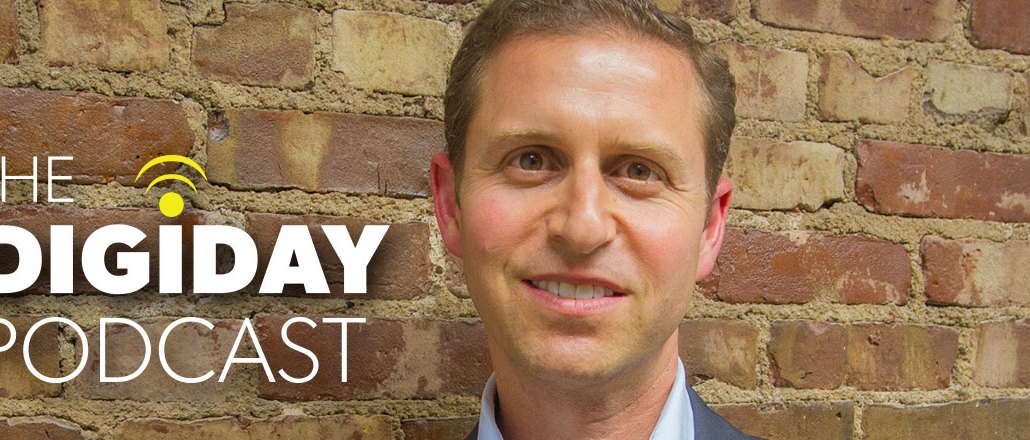Save 50% on a 3-month Digiday+ membership. Ends Dec 12.

Subscribe: iTunes | Stitcher | RSS
For Forbes Media CRO Mark Howard, ad blocking isn’t just a nuisance confined to early adopter types. It’s an “industry-wide issue” that represents an “existential threat” to publishers — and calls for drastic action.
“What we’re experiencing on a global basis is an indication of what’s to come,” he said on this week’s episode of the Digiday Podcast. “We as an industry have to get our heads around the advertising experience and concerns over privacy that have led the early-adopters to deploy ad blockers.”
Forbes has been the forefront of the fight against ad blockers. In late December, it began blocking ad-block users, insisting they whitelist Forbes to gain access to an “ad-light” experience.
The results so far:
- 13 percent of visitors had ad blockers installed.
- 44 percent, or 8 million people, stopped from accessing the site have turned off their blocker or whitelisted Forbes.
- Those with an “ad-light experience” — no interstitials, heavy ads or in-page video units — consume 40 percent more pageviews and double their time spent.
“We have this existential challenge that’s a tragedy of the commons,” he added. “It’s not necessarily my site or the next person’s site that did it; it’s the experience overall.”
Below are lightly edited highlights from the episode with Howard.
People are “fed up.”
Many industry responses — including the Interactive Advertising Bureau’s recommended steps — dwell on “educating” ad blockers that the vast majority of free content and services they enjoy on the internet is only possible thanks to advertising. And yet that’s not enough, Howard said.
“They’re so fed up with what we’ve put them through,” he said. “We have to solve that problem and regain their trust.”
But just cutting back on intrusive ads isn’t possible.
Forbes now has data showing that when users aren’t presented intrusive ads like “welcome” units, autoplay video and heavy ads that slow the site they stick around longer and engage more. It would seem to argue that instead of only taking this approach with those motivated to install ad blockers that the publisher should make this the default. Alas, that’s not possible with revenue numbers to hit, Howard said.
“We can get there,” he said. “There’s huge [advertiser] demand for pre-roll video, for interstitial video. Advertisers are looking for that inventory. Being able to offer that to them as a publisher is something we want to do.”
Ad-free subscriptions aren’t the answer — at least for Forbes.
There’s some thought that the idea that most of the content on the internet shouldn’t be free and supported solely by advertising. Forbes, as a mass publisher, makes all its content freely available. Earlier this week, New York Times CEO Mark Thompson hinted that the newspaper would look at offering users ad-free subscriptions. Howard doesn’t believe in such a model for Forbes.
“We never toyed around with the idea of a subscription model,” Howard said. “Subscription models are very difficult. I think the Times is probably the best-suited publication to be able to ask people to pay for their content. They’ve experienced some success, but it takes a lot of work and resources to do that. Of the unique visitors who come to their site every month, it’s still a small percentage who are paying — and that’s the Time.”
Mobile web trumps apps for Forbes
Depending on who you talk to, the age of apps is ending. After all the average person downloads exactly zero in a typical month. Forbes, like many publishers, attracts 50 percent of its users on mobile. But Forbes is unusual in some ways. For one, less than 10 percent of its mobile traffic is from Facebook. For another, apps the mobile web wins thanks in large part to Forbes’ strength in Google results. Now, it’s building a mobile content-management system to allow for stories (and native ads) made for the mobile Web experience.
“We know that in order to connect to that audience we need to create unique experiences,” Howard said. “Maybe with an optimized experience that matches what they’ve come to expect from an app environment, there should still be a real purpose for us. I don’t think platforms displace mobile web.”
More in Media

The Washington Post debuts AI-personalized podcasts to hook younger listeners
The Washington Post has used AI to build a pick-your-own-format news podcast, letting listeners choose the topics, hosts and duration.

Workforce data, smarter AI integration among greatest workplace priorities in the new year
The growing importance of workforce data is just one of the prognostications people managers are making looking to the year ahead.

WTF is AI citation tracking?
Publishers are tracking AI citations to understand visibility, attribution gaps and referral traffic in these tools and platforms.





